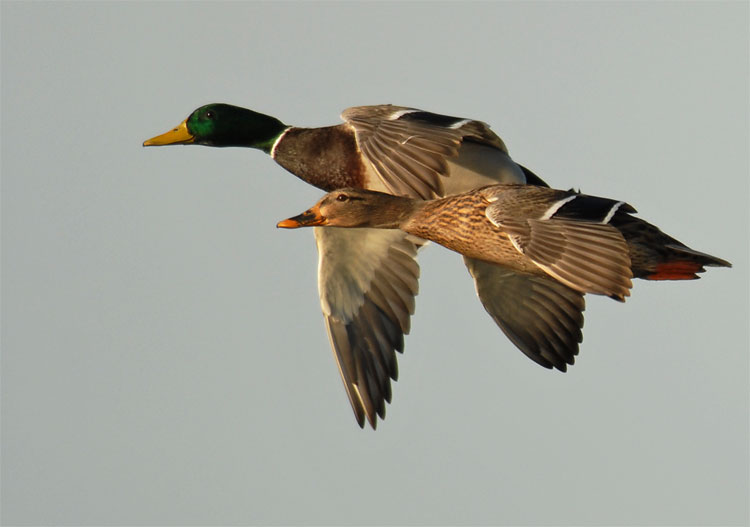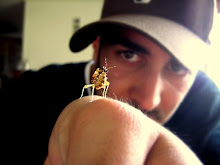This is an incredibly well articulated statement made by author David Icke on the subject of an Animal Rights Bill. His words are just as relevant today.
Wednesday, March 25, 2009
White Tigers: Fact vs. Fiction
This is an excellent video, produced by the dedicated team at Big Cat Rescue in Florida, explaining in clear terms the truth behind the white tiger.
For more information on animal abuse in circuses, visit www.circuses.com. Please, don't go to the circus!

For more information on animal abuse in circuses, visit www.circuses.com. Please, don't go to the circus!

Monday, March 23, 2009
A Quick Rundown of Science and Education
I’ve always been interested in animals. Ever since I was a little kid and I had snakes and cats and rats as pets. I think most, if not all, kids have an inherent interest in animals and science because it involves the natural wonder of the planet around them. As children grow and learn, they grapple with defining who they are in large part by what relationship they share with all the other things that shape their world.
Science is taking a big hit in public education in the US right now. As the state tests here in California for example are designed more and more to evaluate only a student’s proficiency in math and literacy, more and more teachers are forced to spend an increasing amount of time on those subjects, because if their students don’t do well on the tests, the No Child Left Behind Act has ensured that the schools that those students represent will be penalized, which means less money, less funding, fewer resources, less pay for the teachers, larger classrooms, and a higher chance for student failure. So, naturally, the teachers continuously are forced to teach to the tests, and science falls by the wayside, along with art, sports, music, etc.
This situation spells disaster for our future because to deal with all of the man-made problems that face our planet, the next generation is going to need to be very scientifically aware. Finding solutions to pollution, water shortages, renewable energy needs--that’s going to take the collective efforts of a highly educated society that is conscious of what’s going on, and that consciousness needs to start at an early age. The world is changing. It’s changing because we changed it, so now we need to learn as much as we can to know how to slow those changes way down and deal with the consequences of ours and past generations’ more reckless actions.
Kids need to learn as much as they can about science, animals, and nature. Visit parks, zoos, aquariums and natural history museums in your area. There’s life in every neighborhood, you just have to know where to find it.
They biggest thing that you can do to help the planet is to reduce the amount of stuff you buy and use, reuse resources instead of throwing them away, recycle all of your renewables, and compost all your food scraps. One person can really make a positive impact by doing these four things, so just imagine what can be accomplished if everyone did them.
Remember, the power to change the world lies in your hands. Don't wait to act; our next generation is depending on you!
Science is taking a big hit in public education in the US right now. As the state tests here in California for example are designed more and more to evaluate only a student’s proficiency in math and literacy, more and more teachers are forced to spend an increasing amount of time on those subjects, because if their students don’t do well on the tests, the No Child Left Behind Act has ensured that the schools that those students represent will be penalized, which means less money, less funding, fewer resources, less pay for the teachers, larger classrooms, and a higher chance for student failure. So, naturally, the teachers continuously are forced to teach to the tests, and science falls by the wayside, along with art, sports, music, etc.
This situation spells disaster for our future because to deal with all of the man-made problems that face our planet, the next generation is going to need to be very scientifically aware. Finding solutions to pollution, water shortages, renewable energy needs--that’s going to take the collective efforts of a highly educated society that is conscious of what’s going on, and that consciousness needs to start at an early age. The world is changing. It’s changing because we changed it, so now we need to learn as much as we can to know how to slow those changes way down and deal with the consequences of ours and past generations’ more reckless actions.
Kids need to learn as much as they can about science, animals, and nature. Visit parks, zoos, aquariums and natural history museums in your area. There’s life in every neighborhood, you just have to know where to find it.
They biggest thing that you can do to help the planet is to reduce the amount of stuff you buy and use, reuse resources instead of throwing them away, recycle all of your renewables, and compost all your food scraps. One person can really make a positive impact by doing these four things, so just imagine what can be accomplished if everyone did them.
Remember, the power to change the world lies in your hands. Don't wait to act; our next generation is depending on you!
Mimic Octopus
Introducing the mimic octopus from the tropical seas of South East Asia. What an amazing animal!
Friday, March 13, 2009
Awesome Book: The Backyard Birdsong Guide

Last year on a trip to Costco I found an amazing book, The Backyard Birdsong Guide: A Guide to Listening by Donald Kroodsma. The book not only provides pictures and details for 75 different birds across North America, but also comes with a small little digital audio module that stores over 125 sounds provided by the Macaulay Library of the Cornell Lab of Ornithology. Looking through this wonderfully interactive book has enabled me to identify the calls of dozens of birds in my neighborhood and throughout California. I have found myself feeling so much more in touch with my surroundings than ever before, and in a new and exciting three-dimensional way.
As I write this I am sitting on my back porch. Day-light savings is still messing me up a bit, but today I have a day off from work and school, and I'm enjoying the slow, overcast dawn. I can tell that spring is right around the corner, not because of the weather, but because of the flood of sound coming from every direction around me. I can hear California towhees and their single Tsip notes, spotted towhees and their Zhreeeee calls, the thick caws of the resident crows, interrupted by the twists and turns of the Anna's hummingbirds' bzzbzzbzz bzzbzzbzz dynamic songs.
In my graduate class on math instruction, I've been learning how to teach Number Talks to my students, a fun way to help them develop their number sense. With regular Number Talks students begin noticing mathematically-related patterns everywhere, not just in school, and makes math a part of their everyday, problem solving mind. The Backyard Birdsong Guide has essentially had the same effect on me but by given me a better bird sense. I am conscious of them always now, and when I hear a call that I recognize, I feel as though I know a secret about my surroundings and it gives me an awesome thrill.
I feel as though I'm surrounded by an incredible slough of neighbors I was never before aware of. By noticing what is around me, by learning where some calls come from more than others, my understanding for how these incredible animals live and socialize has taken on new shape, and their lives and struggles has become that much more important to me. As I listen to the vibrat vocal stylings of the sparrows and chickadees coming from the giant oak tree next to me, I can't help but think of their struggle to compete for a mate to help them carry on their bloodline. The Great Competition for Survival. It sends my mind in far-reaching directions... Each leaf of the tree they perch and sing from competing for sunlight, each root competing for water, photosynthesis producing the oxygen I breathe in right now, the incredible cyclical balance of nature...how precious.
As I wrote that last paragraph I heard a mallard, looked up, and sure enough, saw a lone female making a broad U-turn in the sky, perhaps on her way back to the Lake. How did I know it was a female? Perhaps if she was closer I could tell by her uniform brown coloration, contrast to the males, who bear an iridescent set of royal green around their head and neck. But she was too far up in the sky for me to visually tell her sex. I knew from her calls!

I highly recommend this book to one and all, especially kids that are interested in learning more about the wildlife that surrounds them. It would perhaps be especially exciting for those that don't live in areas with a great deal of nature on a ground level, since there are birds that live nearly everywhere (we just don't think to look up or keep our ears tuned often enough to realize that they're there!). I remember being so excited as a kid to turn over a rock in the backyard and to find pill bugs and earthworms. I know that if I had this book when I was young I would have carried it around everywhere.
Subscribe to:
Comments (Atom)
